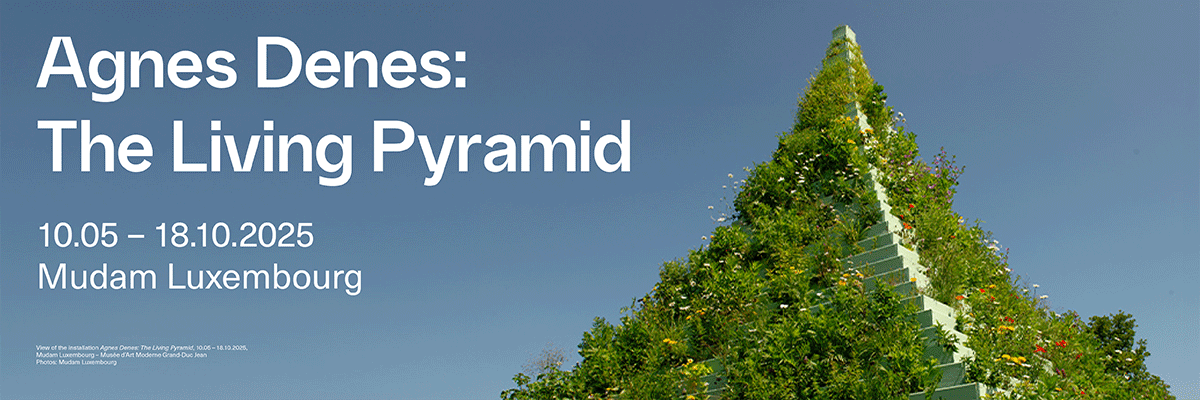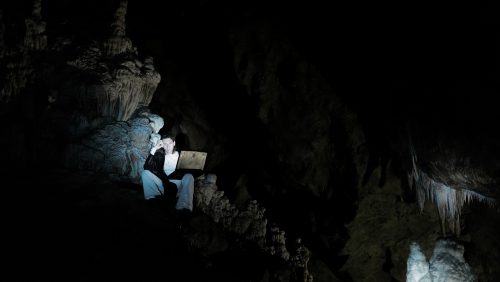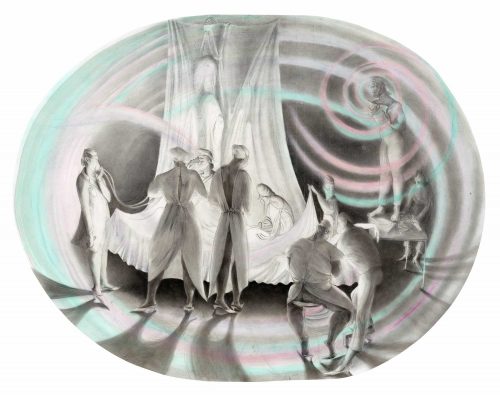
Gianni Caravaggio & Johannes Wald
Gianni Caravaggio & Johannes Wald
Project Info
- 💙 Galerie Stadt Sindelfingen
- 💚 Hannah Eckstein
- 🖤 Gianni Caravaggio & Johannes Wald
- 💜 Hannah Eckstein
- 💛 Wolfgang Günzel & Johannes Wald
Share on

Installation view: Gianni Caravaggio & Johannes Wald – unforeseen © 2025: the artists and Galerie Stadt Sindelfingen, Photo: Wolfgang Günzel
Advertisement

Installation view: Gianni Caravaggio & Johannes Wald – unforeseen © 2025: the artists and Galerie Stadt Sindelfingen, Photo: Wolfgang Günzel

Gianni Caravaggio, Will we miss each other again?, 2025 © 2025: the artists and Galerie Stadt Sindelfingen, courtesy: the artist, kaufmann repetto, Mailand, New York, Claudio Marenzi, Photo: Wolfgang Günzel

Gianni Caravaggio, Will we miss each other again?, 2025 © 2025: the artists and Galerie Stadt Sindelfingen, courtesy: the artist, kaufmann repetto, Mailand, New York, Claudio Marenzi, Photo: Wolfgang Günzel

Gianni Caravaggio, Will we miss each other again?, 2025 © 2025: the artists and Galerie Stadt Sindelfingen, courtesy: the artist, kaufmann repetto, Mailand, New York, Claudio Marenzi, Photo: Wolfgang Günzel

Gianni Caravaggio, Young Universe, 2014 © 2025: the artists and Galerie Stadt Sindelfingen, courtesy: the artist, kaufmann repetto, Mailand, New York, Claudio Marenzi, Photo: Wolfgang Günzel

Johannes Wald, stone with no form, 2016 © 2025: the artists and Galerie Stadt Sindelfingen, courtesy: the artist, Galerie Rolando Anselmi, Berlin, Rom, Galerie Greta Meert, Brüssel, Photo: Wolfgang Günzel

Installation view with works by Johannes Wald © 2025: the artists and Galerie Stadt Sindelfingen, courtesy: the artist, Galerie Rolando Anselmi, Berlin, Rom, Galerie Greta Meert, Brüssel, Photo: Wolfgang Günzel

Installation view with works by Johannes Wald © 2025: the artists and Galerie Stadt Sindelfingen, courtesy: the artist, Galerie Rolando Anselmi, Berlin, Rom, Galerie Greta Meert, Brüssel, Photo: Johannes Wald

Johannes Wald, stade du miroir, 2022 © 2025: the artists and Galerie Stadt Sindelfingen, courtesy: the artist, Galerie Rolando Anselmi, Berlin, Rom, Galerie Greta Meert, Brüssel, Photo: Johannes Wald

Installation view with works by Johannes Wald © 2025: the artists and Galerie Stadt Sindelfingen, courtesy: the artist, Galerie Rolando Anselmi, Berlin, Rom, Galerie Greta Meert, Brüssel, Photo: Wolfgang Günzel

Johannes Wald, broken and failed / attempts at forming adequate gestures of beauty, 2009 – 2022 © 2025: the artists and Galerie Stadt Sindelfingen, courtesy: the artist, Galerie Rolando Anselmi, Galerie Greta Meert, Photo: Johannes Wald

Installation view with works by Johannes Wald © 2025: the artists and Galerie Stadt Sindelfingen, courtesy: the artist, Galerie Rolando Anselmi, Berlin, Rom, Galerie Greta Meert, Brüssel, Photo: Johannes Wald

Johannes Wald, stade du miroir, 2019 © 2025: the artists and Galerie Stadt Sindelfingen, courtesy: the artist, Galerie Rolando Anselmi, Berlin, Rom, Galerie Greta Meert, Brüssel, Photo: Johannes Wald

Installation view with works by Johannes Wald © 2025: the artists and Galerie Stadt Sindelfingen, courtesy: the artist, Galerie Rolando Anselmi, Berlin, Rom, Galerie Greta Meert, Brüssel, Photo: Wolfgang Günzel

Johannes Wald, untitled (night shift), 2021/2025 © 2025: the artists and Galerie Stadt Sindelfingen, courtesy: the artist, Galerie Rolando Anselmi, Berlin, Rom, Galerie Greta Meert, Brüssel, Photo: Wolfgang Günzel

Installation view with works by Gianni Caravaggio © 2025: the artists and Galerie Stadt Sindelfingen, courtesy: the artist, kaufmann repetto, Mailand, New York, Claudio Marenzi, Photo: Johannes Wald

Gianni Caravaggio, First Snow, 2021 © 2025: the artists and Galerie Stadt Sindelfingen, courtesy: the artist, kaufmann repetto, Mailand, New York, Claudio Marenzi, Photo: Wolfgang Günzel

Installation view with works by Gianni Caravaggio © 2025: the artists and Galerie Stadt Sindelfingen, courtesy: the artist, kaufmann repetto, Mailand, New York, Claudio Marenzi, Photo: Wolfgang Günzel

Installation view with works by Gianni Caravaggio © 2025: the artists and Galerie Stadt Sindelfingen, courtesy: the artist, kaufmann repetto, Mailand, New York, Claudio Marenzi, Photo: Wolfgang Günzel
Gianni Caravaggio and Johannes Wald, two conceptual sculptors whose purist works are imbued with a poetic momentum, meet in unforeseen. While Gianni Caravaggio is directing his gaze both towards nature and the universe, assuming an existential reality of his art, Johannes Wald’s poetry is the result of a constant questioning of his own artistic existence, starting from the non-rational and exploring the origins of creativity, fantasy and imagination.
Wald’s works deal with the artistic processes that emerge from subconscious and explore how thoughts become objects that conquer the world as materialised entities. Works such as the subconscious (2025) – a table consisting of steel trestles and a plaster plate with the imprints of two hands embedded in its surface, which protrude into the space on the underside of the plate like two abstract bodies as a positive volume – allude to unconscious thought processes that often precede artistic work. Thoughts that initially lie just beneath the surface, that have not yet matured to the point where they can be verbalised or materialised, but which are nevertheless there and in some way tangible.
Similar considerations also underlie the works from the series drawings, words and errant thoughts, whose source materials are the artist’s notebooks. As the title suggests, Wald collected in them unfiltered all sketches, notes and thoughts that were created during the period mentioned in the subtitle. Some of the notebooks, which contain next to drafts also countless ideas, sketches and concepts that have been discarded or not yet realised, were shredded to create large sheets of paper. Another part was hung in galvanic baths and coated with a layer of copper. In this way, the contents are removed from legibility, but at the same time materialised into a new artistic work.
Johannes Wald repeatedly distances himself from his artistic persona, observes it from the outside and turns it into his material. The studio plays a central role in this. The place where the identity is born and lives. Three video works bear witness to this, all of which were recorded in the artist’s studio and film him performing activities that normally remain hidden from viewers.
Other works thematise the doubts and struggles for one’s own artistic self-image. For the series stade du miroir, the idea was decisive in a deep artistic crisis that if an artist creates a mirror with his own hands and looks into it, he will find his own artistic identity reflected in it. One of the works in this series builds a bridge to another area of Johannes Wald’s interest, as his works are also reflections on the existential conditions of sculpture and incorporate the historical dimension of the medium. The mirror is made from the glass of a studio window and the silver of an almost 2000-year-old ancient Roman coin, which once showed a relief of Emperor Vespasian. The coin was dissolved in acid and applied to the glass pane as a mirror layer in a chemical process, so that today we can see our portrait in it.
untitled (several attempts at forming an adequate gesture of beauty) (2012), a bronze arm that is movable at its joints, and broken and failed / attempts at forming adequate gestures of beauty (2009–2022), a container filled to the brim with discarded plaster casts of bodies, deal with the ancient ideals of beauty, which have been handed down primarily in sculptures and been decisive for sculpting for centuries – albeit always in a modified form. At the same time, they also allude to the inability of the static medium to reproduce movement realistically.
Meanwhile, works such as stone with no form (2016), eight white sacks of ground limestone stacked on top of each other, and untitled (base) (2019), a square slab of bronze, are formally reminiscent of minimal art, but aim to activate the viewer. For although the titles evoke a form or a sculpture in the imagination, they are nevertheless absent in their presence.
Gianni Caravaggio’s works, on the other hand, are condensations of nature experiences and metaphors of the cosmic order. Young Universe (2014) – a conglomerate of glass spheres of different sizes held together by a wire that traces the outline of the artist’s right hand – visualises an early stage in the development of the universe. The work thus represents the singularity that contained all the matter and energy of the cosmos before time and space existed and everything, we call reality. While this version of Young Universe is installed in a niche in the main building, on the upper floor of the Octagon, the museum extension, one encounters a later stage of development in which the matter has already expanded further, and the glass spheres are accordingly spread out on the floor around the outline of the artist’s left hand.
Caravaggio’s works thus repeatedly throw us back to our own fateful existence within this universal structure, in whose space-time continuum human existence appears void, yet wondrous. The work Melancholia or Transparent (1995) hangs freely in the glass transition to the Octagon. The photo shows the 26-year-old artist in the pose of melancholy. However, his head is not resting on his own hand, but on that of an old master potter. The transparent photograph absorbs everything that is present. The surroundings, the constantly changing weather and light as well as the passers-by – everything is interposed between the artist’s past face and his future hand.
Time runs through my fingers (2021), two palm leaves, one natural, one cast in bronze, which appear like interlocked hands, refer to the process of decay. For while the bronze remains and appears as if it is a fossil, the natural will lose its green colour in the coming weeks and fade away.
Will we see each other again? (2024) is also a metaphor for the fact that human existence and individual realities are fated. In two adjacent exhibition rooms, we encounter three snakes. One made of aluminium, one of white bronze and one of zinc. While they move in a straight line towards each other in one room, they have clearly missed each other in the other room and will have to repeat their journey around the world. Whether they then meet or miss each other by a hair’s breadth again remains uncertain and is left to the imagination of each viewer.
Lonely journey through space and time (2021) consists of a long, round shape made of pink onyx, reminiscent of a drill core, with a notch running its entire length in which a red azuki bean lies. Over millions of years, sedimentary deposits have compacted to form this stone. A temporality that can be understood through the grain of the stone, but which the human mind is barely able to grasp. However, the bean, which for Gianni Caravaggio, as for Plato, symbolises the human soul, can transcend this span in its notch – and we can accompany it in our thoughts.
Fog devides the sun from the horizon (2019), the phenomena described in the title appear through a blue and a yellow string and a white alabaster stone and are only evoked to the extent that the viewer’s imagination is called upon. In Gianni Caravaggio’s works, nature and its forces thus become manifestations of the spirit, which first take shape in the subjective perception of the viewer, then materialise and finally take on an ever new, individual meaning.
Hannah Eckstein




